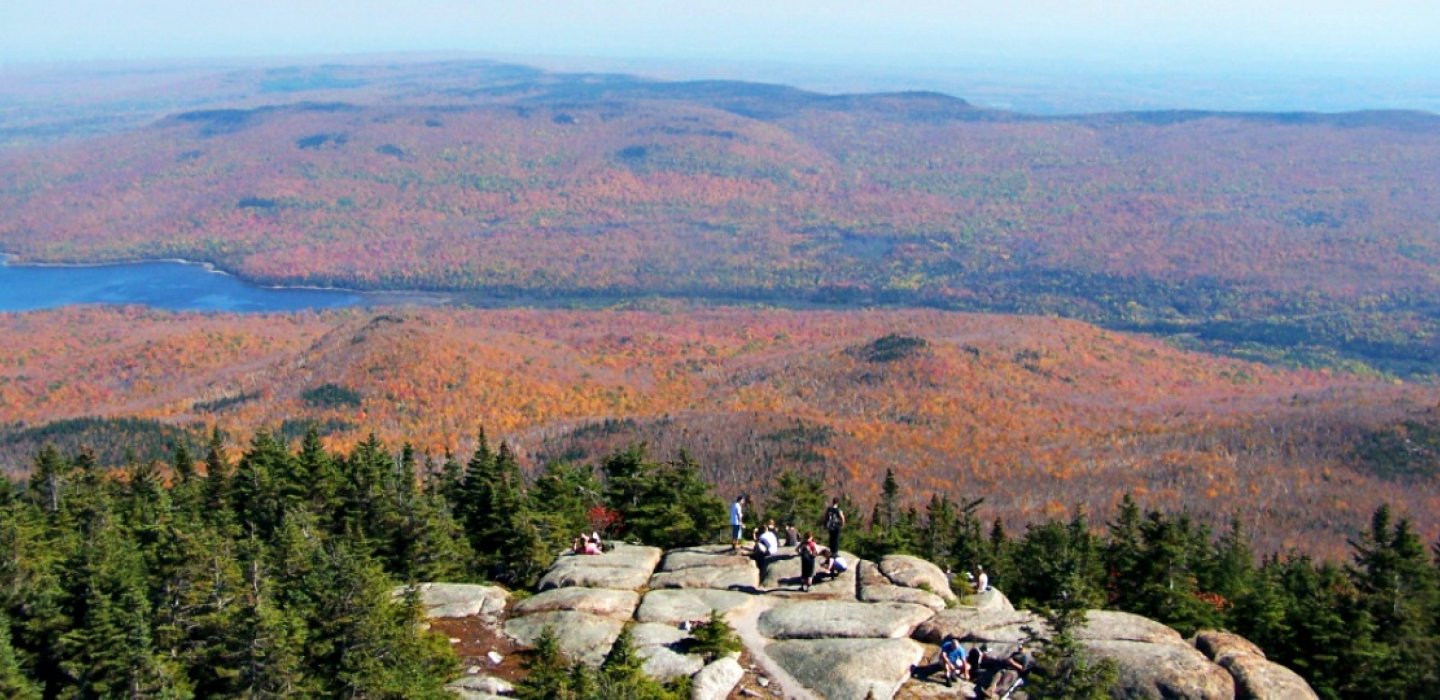
It's not exactly hidden, but it is a gem: Lyon Mountain.
It is both a climbable peak and the tough mining community which developed around the rich veins of iron ore, which was famous for its quality. The cables holding up such celebrated bridges as the Brooklyn, the George Washington, and the Golden Gate are cored with Lyon Mountain iron.
The mining operations peaked in the late 1880s. As the mines slowly declined in economic importance, Lyon Mountain developed into a "baseball town." More than a thousand fans would appear for their games against other local teams, and some players would advance into the major leagues.
In 1917, Lyon Mountain was designated a fire tower peak, with a 35-foot steel tower being erected at the summit. The early 1900s saw forest fires interfering with the increasing activity of logging and mining in the area, and the State of New York built manned towers in strategic spots. The fire spotters would survey the landscape for early signs of trouble, and alert ground crews to the danger while it was still small.

The name has nothing to do with the once-common mountain lions of the Adirondack mountains. A relative and namesake of General Nathaniel Lyon moved to the base of the mountain in 1803, and his name became attached to the mountain and town. He might still be pleased today, since "his" mountain is an incredible hike with a lot of attractive elements.
fire tower
Lyon Mountain is a perfect spot for a fire tower. The restoration and rehabilitation of this nearly century-old tower was completed in 2015 by the DEC and the Student Conservation Association Adirondack Program.
When we are already on top of a bald summit, a fire tower can seem like a luxury, but it is a wonderful one. Originally built to give a better view of possible forest fires, it now offers the same vistas, this time for pure aesthetic enjoyment. From the tower there are views of Montreal to the north, the Canadian border plains to the west, Lake Champlain and Vermont's Green Mountains to the east, and the High Peaks wilderness to the south.

There's an entire New York State Fire Tower Network of climbs. They are mostly in the Adirondacks, which once had fifty-two peaks so adorned. Another member of this network is Azure Mountain, in the Debar Mountain Wild Forest. But Lyon Mountain is more formidable, with a height of 3,829 feet.
Ironically, Couchsachraga is one of the 46 High Peaks, and it is 3,820 feet high. Modern surveying methods have revealed a few of the 46ers to be less than the required 4,000 feet, but they have retained their membership out of tradition. Still, Lyon is the highest mountain in the northeast section of the Adirondacks.

So it could have been one of the High Peaks, known as the 46ers. If its location were different, it might have been the 47ers.
choice of trails
Lyon offers the original, steep trail, 2.5 miles each way, and a new (as of 2008) trail with more switchbacks, at the expense of a longer trip of 3.4 miles each way. There's an overall elevation gain of 1900 feet. But each trail is the same along the first leg, and only diverges later.

It starts out as a easy woods walk, with beautiful foliage in the fall and cool shadows in the summer. As the trail gets steeper, we come to a fork, where we can continue under the trees with the new trail and its eleven switchbacks, or take the steep trail.
There are some advantages to the "goat trail," such as the part of the trail which is lined with mossy stones, the more abundant sunshine, and a more open trail. There's a view of Chazy Lake when we are only two-thirds of the way up, and from here on, the vistas just keep on coming.

However, it's not just challenging because of the steep pitch. It also has sections that are rocky. Not just "rocks in the trail" but made up of different sized rocks. If we like mountain goat trails it's not terribly daunting, but if we are bringing children or dogs, they would be better off on the easier trail.
We can also choose to ascend with the steep trail, and descend with the gentler trail. This is easier on the knees, and we are actually less likely to lose our footing climbing up the uneven trail. We commit our weight on the ascent with some of it still on the planted foot. When we descend, the ground takes our full weight and has gravity pulling us down.

The final push to the summit, where the two trails meet, becomes very steep, so it's not like anyone is not going to get their climbing in.
magical experience
For those willing to commit to a four- to six-hour journey, this hike can be an incredible experience. It is considered one of the prettiest hikes in the whole of the Adirondacks. Now, with a choice of trails, it has even more to offer.
There's forests which vary from mixed hardwood to conifers, interesting rock formations along the way, and bridged stream crossings. Of course, there's a full 360-degrees view from the fire tower, which is all the more spectacular because there are no other local mountains to block the sightline.

Lyon Mountain, the town, has a historical reputation for ruggedness. With a mix of miners, some recruited "straight off the boat" on Ellis Island, it was once home to French Canadians, Poles, Italians, Russians, Swedes, Norwegians, Danes, Croats, Irish, African-Americans, Hungarians, Mexicans, and Lithuanians, along with some Welsh and Syrians. The work was difficult and dangerous, and the town was a patchwork of differing cultures.
Those times are gone, now, from a mix of played out veins of ore to better opportunities than risking danger every day. But Lyon Mountain itself still dominates the landscape, offering a kinder challenge, and a reward for looking up, not down. It's one we have to put on our to-do list.
So it missed being a High Peak. It doesn't matter. In all ways, it stands alone.
Choose from our range of lodging. Sate that appetite with our choices in dining. Get up and do it again with another fun hike.
Header photo courtesy Andy Arthur, hike photographer extraordinaire, from andyarthur.org
Pussycat, pussycat, where have you been?







Comments
Add new comment